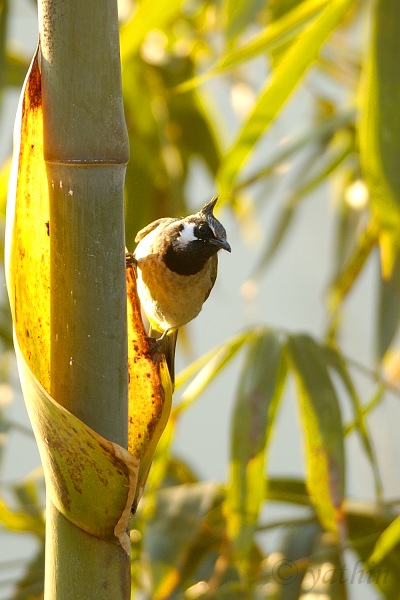
Gangtok: After conducting three survey trips in Sikkim's Kangchendzonga National Park (KNP) over the past three years, a five-member team, headed by Professor Trevor Price from the US, voiced their excitement over the possibility of finding rare bird species that have not yet been discovered.Prof Price told UNI that a recent census, concluded on June nine, showed that rare bird species like Rufus Breasted Bush Robin and Blue Fretted Blue Robin, which were globally threatened species, were found in good numbers at the KNP.''During our census, we found that these rare bird species are common in KNP. If such birds are in good numbers in KNP, definitely there must be more other exotic species and also some amphibians that have not yet been discovered globally,'' Prof Rice said.Now named as Biosphere Reserve in Sikkim, KNP is a haven of prized Musk Deer, elusive Snow Leopard and the shy Himalayan Tharr, the Shapi of Sikkim.The KNP is one of the most famous high altitude national parks in the country and is endowed with one of the most magnificent high altitude ecosystems in the world.The park, which has an elevation of 1,829 m to over 8,550 m above mean sea level, was commissioned on August 26, 1977, considering the floral, faunal, ecological, geomorphologic importance and the wildlife potentiality of the area.The census, which was conducted from May two to June nine at the KNP, was part of the five-year joint project of the National Science Foundation of the US and Wildlife Institute of India (WWI) to study the bird species numbers and density in Eastern and Western Himalayas.The project began from Sikkim with this census and its next stop would be Arunachal Pradesh and West Begnal, Scientist at the WWI Dhananjoy Mohan said, who was also a member of the research team.During the census, the team selected three locations at different altitudes of the 1784 sq kms KNP - Sachin (2300 m), Tsoka (3200 m) and Dzongri (4000 m) for the survey of terrestrial bird species and their habitats.The census period (May-June) was chosen because it is the breeding season and the best season for locating birds.The team recorded pictures, data and songs of around 100 bird species during the census.Prof Price, who has researched in different parts of India for the past 35 years, said the Sikkim Himalayan region had over 500 terrestrial bird species which is the second highest density in the world after Andes in South America. The region had such high density because of its different climatic zones from tropical to alpine, he added.
 Stressing that a beginning had been made in finding out the bird species in the region, Prof Price said more research was needed.Under the project, DNA sequences of all bird species would be mapped with the data collected. The basic goal was to find out why there were more bird species at the Eastern Himalayas than the Western, the project team members said.''Long term monitoring stations at Himalayas is a must to study the birds as the entire picture in the next 30 odd years may change due to global warming and habitat loss,'' Prof Price said.The team will be returning to Sikkim every year in the next four years and a fresh survey of the bird species will be done.Besides, parallel census will be initiated by another team in the Western Himalayas.The other members of the census team were Pratap Singh from the WWI, Nitin Jamdar from the Bombay National Historical Society and Mausumi Gosh, a researcher.
Stressing that a beginning had been made in finding out the bird species in the region, Prof Price said more research was needed.Under the project, DNA sequences of all bird species would be mapped with the data collected. The basic goal was to find out why there were more bird species at the Eastern Himalayas than the Western, the project team members said.''Long term monitoring stations at Himalayas is a must to study the birds as the entire picture in the next 30 odd years may change due to global warming and habitat loss,'' Prof Price said.The team will be returning to Sikkim every year in the next four years and a fresh survey of the bird species will be done.Besides, parallel census will be initiated by another team in the Western Himalayas.The other members of the census team were Pratap Singh from the WWI, Nitin Jamdar from the Bombay National Historical Society and Mausumi Gosh, a researcher.--- UNI
